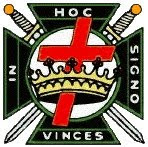



17 Feb 2008 ... Kosovo's parliament declares independence from Serbia.
Reading the declaration, “Kosovo's Prime Minister” Hashim Thaci said the new Kosovo will be ''dedicated to peace and stability.''
What a nice and decent speech to hear , PEACE and STABILITY !! of course there will be peace we got rid of all nasty serbs , damned Christians we burned their monasteries , destroyed their churches , expelled them from their ancestry villages , how could there be war or instability if there’s no one left of theses demon serbs ??? and we got everything under UN and NATO supervision.
Centuries of organized ethnic cleansing : Kosovo is the very essence of Serbian spiritual, cultural identity and statehood since Middle Ages to date. Fertile and clement planes of Kosovo with mild climate, and reach in water resources, with high mountain chains bordering with Albania have been good-blessed environment for a fruitful development of the highest achievements in all fields in medieval Serbia. The cultural and demographic strength of the Serbs is best illustrated by the presence of 1.500 monuments of Serbian culture identified so far. Numerous outstanding noble Serbian families used to live in these regions.
Turkish invasion was a fatal turning point in Serbian history. Prince Lazar Hrebeljanovic and Serbian nobility in the famous battle of Kosovo in 1389 did everything humanly possible to stop the Turkish invasion toward south eastern Europe. The Turkish invasion of south eastern Europe and the Serbian lands as its part, have not only brought about the fall of Christian civilization, but are also responsible for the destruction of all social structures, the elimination of the Serbian elite and the destruction of the most outstanding cultural achievements. One part of Serbian nobility was killed, one part expelled to Asia, one part forced to take up Islam, and one part managed to emigrate north, west and across the Adriatic to Italy. With the ottoman Turkish occupation of Kosovo , the serbs in Kosovo suffered persecussions , they were forced to leave their homelands… but until the 18th century there was no Sqipetars* (now called Albanians) in Kosovo. Actually, they began settling in this region in greater numbers only in the 18th and 19th century from today’s northern Albania. In addition to the newly settled Sqipetars (now called Albanians) who were mostly Muslims or converted to Islam soon after settling in Kosovo, it is also the islamization of the Serbs that brought about great changes in the cultural environment of this region. Many of islamized Serbs gradually fused with predominantly Albanian Moslems and adopted their culture and even language. At the beginning of the second half of the 19th century, the Turks also settled Cherkeses in this region. Despite of all these artificial demographic changes, Orthodox Serbs decreased for almost 50% of the total population living in Kosovo.
It is during the Second World War, that the most drastic changes in the demographic picture of Kosovo took place. The Albanian nationalists got free hand to terrorize the Serbs. Under such pressure estimated 75,000 Serbs left Kosovo. In their empty houses about the same number of Albanians from Albania settled. This definitelly tipped the ballance in the Albanian favour. The first official census in post-WWII Yugoslavia (in 1948) showed 199,961 Serbs and Montenegrins in Kosovo and 498,242.
After the Second World War, As a result of unbelievable demographic explosion Albanian population in Kosovo doubled by 1971. The official Yugoslav census for that year shows 916,168 Albanians living in Kosovo, while Serb and Montenegrin population reached only to number 259,819. This demographic trend clearly demonstrates that the theory of Serb repression over Albanians after the WWII is absolutely not correct. The truth is that the Commnist authorities favorized the Albanians on the expense of Serbs allowing uncontrolled settlement of Albanian immingrants and tolerating different methods of ethnic discrimination over the Serbs which made more and more Serbs leave the province and seek better life in Central Serbia. By 1990ies more than 800 settlements in which Serbs lived with Albanians became ethnically clean Albanian villages.
In an attempt to prevent the secession of Kosovo Serbian government in 1990 abolished Kosovo Albanian authonomy. A failure of Milosevic government to develop true democratic institutions instead and using the police methods to prevent Albanian secession even more increased ethnic Albanian wish to cut of from Serbia. When the KLA rebels began attacks on Serbs in 1998 the Government brought the army and police to put the rebellion down. In the course of the civil war - 1998-1999 which ended by the NATO intervention against Yugoslavia more than 500.000 Kosovo Albanians fled the province to Macedonia and Albania. After the war, despite the international presence, KLA organized persecutions of Serb population and more than 200.000 Serbs fled Kosovo. Only 90.000 Serbs remained living in total isolation, dispersed in several KFOR protected Serb enclaves.
Today Kosovo is still a Serbian province although the declaration of independence, it’s independence divides the world while the US and it’s allies recognize it as an independent countries , many major powers don’t recognize the independence (Russia , China , India , Brazil, Spain , Greece …).The EU has no official position towards Kosovo's status and it didn’t apply for UN membership because of the fear of a Russian Veto.
In an unusual resort to international law, Serbia won a bid on Wednesday to have the International Court of Justice review the manner in which Kosovo declared its independence.The vote in the United Nations General Assembly was sharply polarized, with 77 countries supporting Serbia’s request, 6 opposed, including the United States, and 76 nations abstaining.
More infos : Kosovo.net


No comments:
Post a Comment